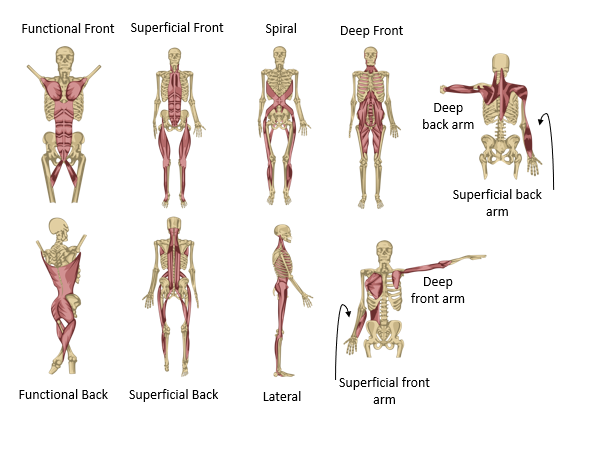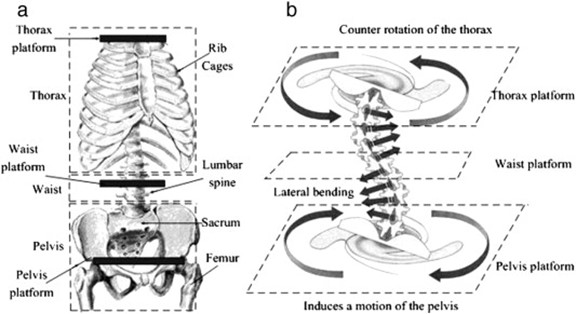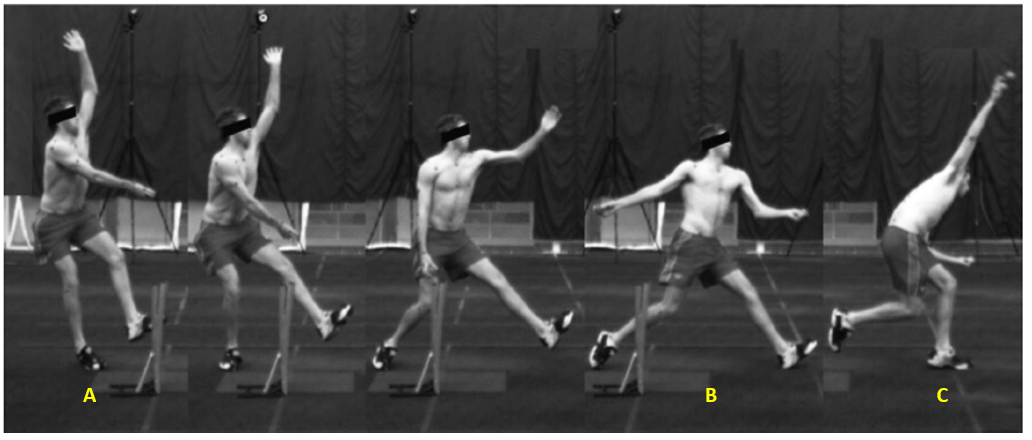You are viewing 1 of your 1 free articles
Center of attention: reconsidering the cricketers’ core
At the center of performance lies the core theory. However, the traditional theory continues to drive debate among practitioners. Candice MacMillan looks at the theory and provides practitioners with insightful practical implications to re-evaluate the idea of core strengthening in cricketers.
Traditionally, practitioners and athletes believe that core muscle strength promotes performance and reduces athletes’ injury risk(1–4). Researchers have investigated the association between core muscle morphology, various performance parameters, and injury(1–4). Additionally, rehabilitation programs for athletes suffering from low back pain (LBP) often include core exercises(5). The prevalence of LBP in cricketers, particularly in adolescent fast bowlers, is high(1,2). Therefore, practitioners include exercises that target these muscles in cricketers’ strength and conditioning regimes to prevent lumbar spine pathology.
However, researchers in Australia deem the core concept a myth(5). They reiterate that the media, industry groups, and well-meaning clinicians can reinforce unsubstantiated beliefs common among athletes with and without LBP(5). There are conflicting research findings related to the characteristics of the core and its association with performance and injury among cricketers, highlighting the need to re-evaluate the core concept(1-3).
Traditional core concept
The core theory refers to the ability to move the limbs to and from the center of the body, while the core stabilizes but does not restrict movement or breathing(6). The deep core constitutes the internal corset formed by the multifidi, internal and external oblique, pelvic floor, transverse abdominis, and quadratus lumborum muscles (see figure 1). The superficial layers consist of the gluteal complex, adductors, and psoas muscles. Upon contraction, these muscles act as a corset to brace the spine(6).
Practitioners may instruct athletes to do the abdominal draw-in maneuver (ADIM) in isolation or while performing a straight leg raise, arm lift, planking, and side planking(2,4,6). All these exercises aim to pre-brace the spine.
While research using MRI, ultrasound imaging, and electromyography activity confirm activation of the core muscles during these exercises, the exercises are done in a static manner(7,8). However, all cricket-related activities are dynamic. Therefore, the ability of these exercises to directly affect players’ cricketing performance is debatable. From an injury prevention perspective, it is questionable if statically trained core muscles would still support the spine at high speeds and under high loads associated with, for example, bowling.
Low back pain is usually associated with increased nerve, disc, vertebral body, or joint compression. The performance of core exercises increases intra-abdominal pressure, further increasing pressure on affected spinal structures. Practitioners should therefore reconsider the rationale for including core exercises in rehabilitating LBP.
A new perspective on proximal stability
The core concept follows that distal mobility requires proximal stability. However, the body is a three-dimensional (3D) movement system consisting of myofascial trains that function on the principle of tensegrity (see figure 2)(9). Biotensegrity implies that biological structures such as muscles, bones, fascia, ligaments and tendons, or rigid and elastic cell membranes, are strengthened by the unison of tensioned and compressed parts(9). Humans have spines surrounded by muscles that control movement and body posture and can generate forces that stiffen the spine. The tension that the limbs create by moving away from the body creates tension (stability) in the proximal part of the body. In high-load situations, co-activation of this 3D movement system and intra-abdominal pressure stiffens and protect the spine.
The spinal engine
The spinal engine model depicts the body as a spiraling spring system (see figure 3). It is the mechanism that introduces torsion to the spine as a result of lateral flexion of the vertebral column in combination with the curvatures of the spine(10). To produce the waist power necessary for high-level sports performances, the rotational motion of the trunk and the internal motion at the hip joints must harmonize with the spinal engine. Optimal mechanical functioning of the spine is necessary for optimal mechanical functioning of the limbs.
At back foot contact (A), a bowler lifts the left front leg to facilitate lateral bend of the lumbar spine. At front foot contact(B), lumbar lordosis is prominent, and the bowler uses body weight to flex the spine laterally to the left. This coupled spine motion induces axial torque, driving the shoulders above and over the pelvis during ball release(C).
The spinal engine theory requires the lumbar spine to be flexed laterally to produce axial torque. The significant torque required to run, bowl, throw or hit a ball demands a large degree of lateral flexion. Additionally, the pelvis must also be tilted. The combined movements of the spine and pelvis result in axial rotation and are prominent during throwing, batting, and bowling (see figure 4). This dynamic view of the spine contradicts the traditional view of the core that involves stiffening the spine by bracing.
The stretch reflex and reactive ability
Cricketers run, jump, throw, and bat during training sessions and matches. Depending on the execution speed, these activities are plyometric. Explosive, plyometric actions require an involuntary series of coordinated, sequenced stretch reflexes dictated by the interplay between Golgi tendon organs and muscle spindles. Traditional core exercises do not elicit the stretch reflex. Static spinal bracing requires co-contraction of various muscles, thereby inhibiting their plyometric ability.
Practical implication
A cricketer’s conditioning program should not only activate the intended myofascial chains but activate them in a manner that is sufficiently similar to cricketing activities. The exercises should promote the spinal engine and the stretch reflex (see figure 5). Therefore, practitioners must consider the speed and range of motion when prescribing exercises.

Conclusion
The core theory has been well described and implemented in cricket rehabilitation and strength conditioning programs. However, research investigating the association between core muscle characteristics and various aspects of cricketers’ performance and injury risk is conflicting. Considering the principles of biotensegrity, the spinal engine model, and the demands of cricket-related activities, the transferability of traditional core strengthening should be reconsidered. Instead, practitioners should research and incorporate dynamic exercises that closely simulate the game’s physical demands when designing cricket performance and injury prevention strategies.
References
- Int J Sports Sci Coach. 2022;17(6):1435-1444
- Phys Ther Sport. 2017;28:34-42
- Phys Ther Sport. 2018;34:208-215
- J Sci Med Sport. 2016;19(3):222-226
- Br J Sports Med. 2020;54(12):698-699
- Sports Med. 2006;36(3):189-198
- Int J Environ Res Public Health. 2020;17(12):4306
- BMJ Open. 2015;5(12):e008711
- Anatomy Trains: Myofascial Meridians for Manual and Movement Therapists. 3rd ed. Elsevier; 2014
- J Biomed Eng. 1987;9(2):99-114
- Mech Mach Theory. 2012;53:50-65
- J of Sports Sci. 26. 267-76.
Newsletter Sign Up
Subscriber Testimonials
Dr. Alexandra Fandetti-Robin, Back & Body Chiropractic
Elspeth Cowell MSCh DpodM SRCh HCPC reg
William Hunter, Nuffield Health
Newsletter Sign Up
Coaches Testimonials
Dr. Alexandra Fandetti-Robin, Back & Body Chiropractic
Elspeth Cowell MSCh DpodM SRCh HCPC reg
William Hunter, Nuffield Health
Be at the leading edge of sports injury management
Our international team of qualified experts (see above) spend hours poring over scores of technical journals and medical papers that even the most interested professionals don't have time to read.
For 17 years, we've helped hard-working physiotherapists and sports professionals like you, overwhelmed by the vast amount of new research, bring science to their treatment. Sports Injury Bulletin is the ideal resource for practitioners too busy to cull through all the monthly journals to find meaningful and applicable studies.
*includes 3 coaching manuals
Get Inspired
All the latest techniques and approaches
Sports Injury Bulletin brings together a worldwide panel of experts – including physiotherapists, doctors, researchers and sports scientists. Together we deliver everything you need to help your clients avoid – or recover as quickly as possible from – injuries.
We strip away the scientific jargon and deliver you easy-to-follow training exercises, nutrition tips, psychological strategies and recovery programmes and exercises in plain English.











